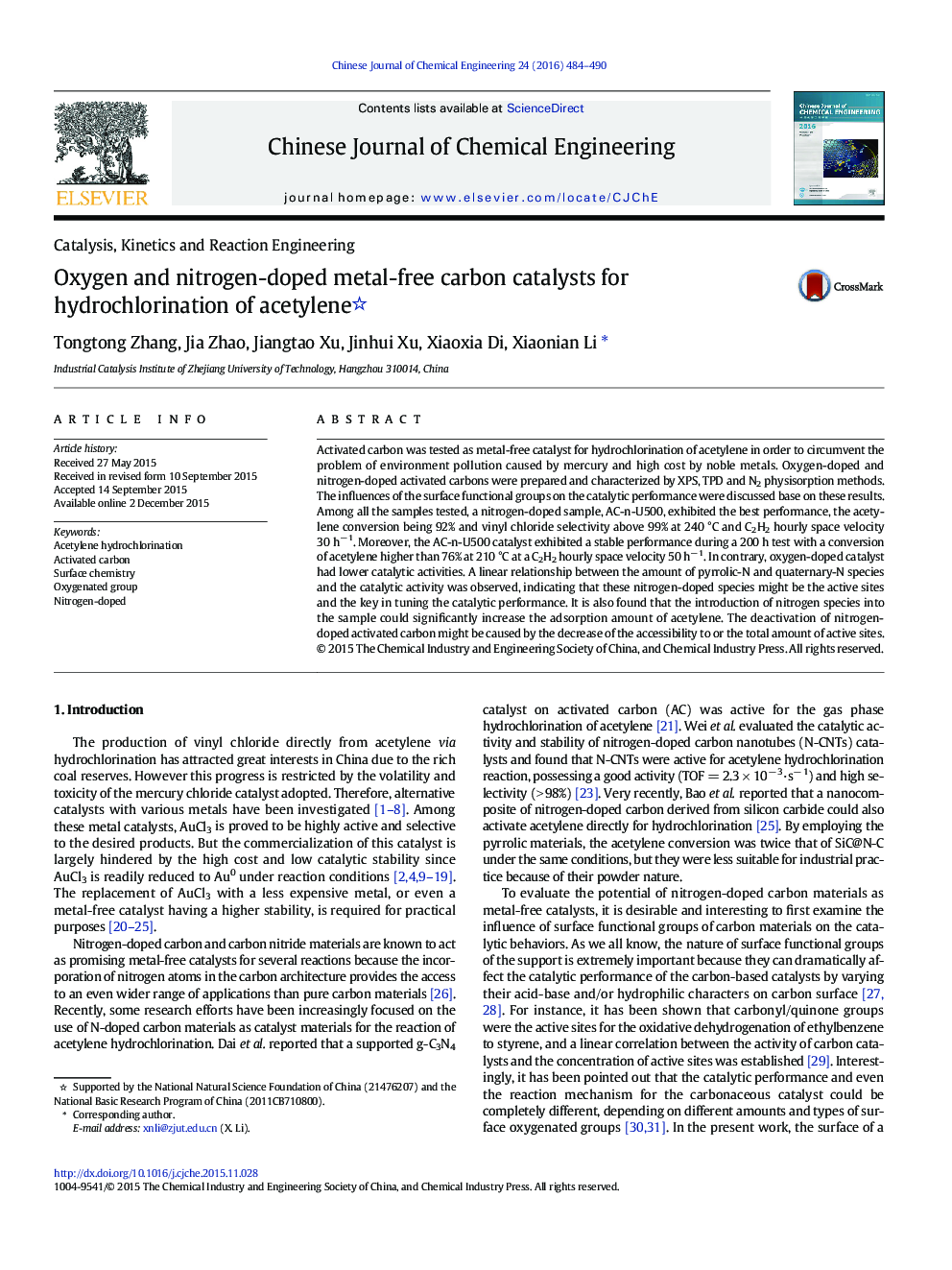| کد مقاله | کد نشریه | سال انتشار | مقاله انگلیسی | نسخه تمام متن |
|---|---|---|---|---|
| 166971 | 1423389 | 2016 | 7 صفحه PDF | دانلود رایگان |
Activated carbon was tested as metal-free catalyst for hydrochlorination of acetylene in order to circumvent the problem of environment pollution caused by mercury and high cost by noble metals. Oxygen-doped and nitrogen-doped activated carbons were prepared and characterized by XPS, TPD and N2 physisorption methods. The influences of the surface functional groups on the catalytic performance were discussed base on these results. Among all the samples tested, a nitrogen-doped sample, AC-n-U500, exhibited the best performance, the acetylene conversion being 92% and vinyl chloride selectivity above 99% at 240 °C and C2H2 hourly space velocity 30 h− 1. Moreover, the AC-n-U500 catalyst exhibited a stable performance during a 200 h test with a conversion of acetylene higher than 76% at 210 °C at a C2H2 hourly space velocity 50 h− 1. In contrary, oxygen-doped catalyst had lower catalytic activities. A linear relationship between the amount of pyrrolic-N and quaternary-N species and the catalytic activity was observed, indicating that these nitrogen-doped species might be the active sites and the key in tuning the catalytic performance. It is also found that the introduction of nitrogen species into the sample could significantly increase the adsorption amount of acetylene. The deactivation of nitrogen-doped activated carbon might be caused by the decrease of the accessibility to or the total amount of active sites.
The surface oxygenated groups introduced by liquid phase oxidizing process played a negligible role to affect catalytic performance, while the nitrogen species introduced by urea calcination did play a significant role and could be active site for hydrochlorination of acetylene. Take into the correlation between nitrogen species and catalytic performance consideration, the conclusion could be drawn that pyrrolic-N and quaternary-N might be the active sites and the key tuning catalytic performance.Figure optionsDownload as PowerPoint slide
Journal: Chinese Journal of Chemical Engineering - Volume 24, Issue 4, April 2016, Pages 484–490
